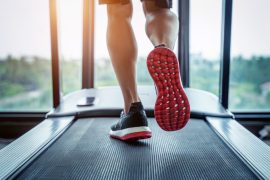The BeUpstanding program is based on over a decade of evidence into what works to help support desk-based workers sit less and move more. The foundation for the program was the Stand Up Victoria study, a randomised controlled trial where the research team delivered the intervention components and ran the evaluation. The initial translation of this intervention into an online program that uses a “train-the-champion” approach to guide workplace champions to deliver and evaluate the program themselves has been previously described, showing that it was effective and acceptable. In the latest paper from the BeUpstanding team we report on Phase 3 of the translation process – our early adopters of the program.

What were we evaluating in Phase 3?
Phase 3 ran from when we first went “live” with the program on September 1st, 2017 until the start of the national implementation trial in mid June 2019. The purpose of this phase was to test the sign-up process and the new platform that we had developed to be able to deliver and evaluate the program. We also wanted to evaluate the extent to which the program and processes were “fit-for-purpose” for our national implementation trial. To test this, we did a “soft launch” of the program with limited promotion.
What did we find?
We found that despite the limited promotion, there was good uptake of the program with 182 Australian users initially registering and 135 (from 113 organisations) going on to complete the sign-up process. We were able to reach users from across Australia and from nearly all (16/19) Australian industries. However, we found that very few users ran the program as intended, with only 7 (5.2%) completing all of the core steps of the program. For those teams that did the staff surveys (n=18 user; 7 organisations), the program was found to be effective, reducing workplace sitting time by an average of − 9.0% (95% CI -12.0, − 5.9%) a day. This roughly equates to a 43 minute reduction in workplace sitting time for an 8-hour workday.
What did we do with this information?
We used this information to make substantial upgrades to the program so that it would be “fit-for-purpose” for the national implementation trial. This included providing more data back to the user through automatic and graphically designed bespoke reports from the evaluation. We also made sure that we were capturing all of the data that we needed to evaluate the implementation trial.
Having this “early adopters” phase was critical to be able to evaluate how the program and processes were working in-practice before wide-scale uptake. We thank all of our early adopters for their invaluable input into this process.
The full article, titled “A RE-AIM evaluation in early adopters to iteratively improve the online BeUpstanding™ program supporting workers to sit less and move more” is freely available.
![]()










Comments are closed.